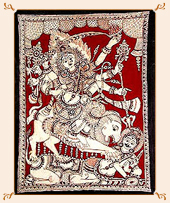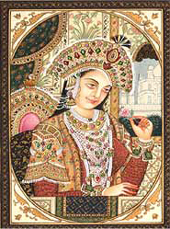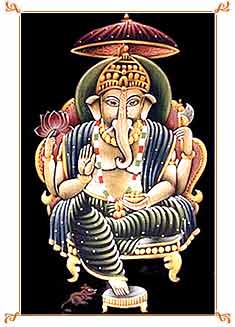|

Mithila
Brahmans
Darbhanga Raj
Vidyapati
Maithili
Language
The various hereditary,endogamous
castes, called jati, are ranked on a scale of superior to inferior,
marked by traditional rules of interaction and sanctions against
certain kinds of interactions, especially intermarriage and
interdining. The principal castes of Mithila are as follows:
Maithil Brahmans
Maithil Brahmins are the highest ranking caste and also, in
political terms, the dominant caste. Because the Maharaja of
Darbhanga was a Maithil Brahman, other Brahmans came to control much
of the land; thousands of villages were in Brahman control, and they
are still the largest landowners in Mithila. The other castes are
described in rank order according to their traditional occupations
as expressed by Brahman informants:
Bhumihars
Bhumihars are small landlords who claim to be Brahmans but are
considered lower because they have taken up agricultural pursuits
and given up priestcraft. Maithil Brahmans serve as their priests
for domestic rites.
Kayasthas
Kayasthas are record-keepers for landowners and village
surveyors and accountants.
Rajputs
The 100,000 Rajputs in Mithila are not native to the area, but came
during the Mughal era and became zamindars. This is why Brahmans
count them as lower than Kayasthas, even though Kayasthas are
technically a superior type of Shudra.The next few castes are the
middle agricltural castes, "clean castes" in ritual terms, upwardly
mobile in political and economic terms, now pushing against Brahman
dominance and getting power in local and state government.
Yadavas
Yadavas are by far the largest caste in the region at one-eighth
of the total population. They are herdsmen and cultivators and
consider themselves kinsmen to the god Krishna, who was also a
cowherd. The Chief Minister of Bihar, Laloo Prasad, is a Yadava.
Dhanuk
Dhanuk is another large agricultural caste, though originally
they were archers; they are considered a "clean" caste from whom
Brahmans can take water, and therefore they often are employed as
servants by Brahmans.
Koiri
Kare considered industrious cultivators and among the best tenants
in the area, but Brahmans will not take water from them, and
therefore their status is lower than the Dhanuk.
Mallah
Mallah are boatmen and fishermen, and thus are considered lower than
the chief agricultural castes, although there is a slight anomaly
here, for Brahmans will take water from them, but not from Koiri.
Dusadhs
Dusadhs are among the most stigmatized of the large castes, but are
also economically very important as agricultural laborers and are
gaining real political power in North Bihar because they form a
large voting bloc with increasingly powerful leaders. The British
knew them as a "caste of thieves" and in some of the larger villages
posted special police stations to keep a curfew over them at night.
Chamars
Chamars carry away the carcasses of dead animals and make sandals,
drums, soccer balls, and bicycle seats out of the leather. Musahars
are negatively stereotyped by upper castes as "eaters of rats,
snakes, and lizards," who are "expert at getting hidden crops from
rat holes." Mali make garlands for temple worship, and have a
special relationship to the smallpox goddess, Sitala.
Dom
Dom are basket-makers and assistants at cremation grounds. There are
also many other important but smaller castes, such as:
Nai, barbers whose wives function as midwives;
Dhobi, washermen;
Kumhar, potters. |



|


|
